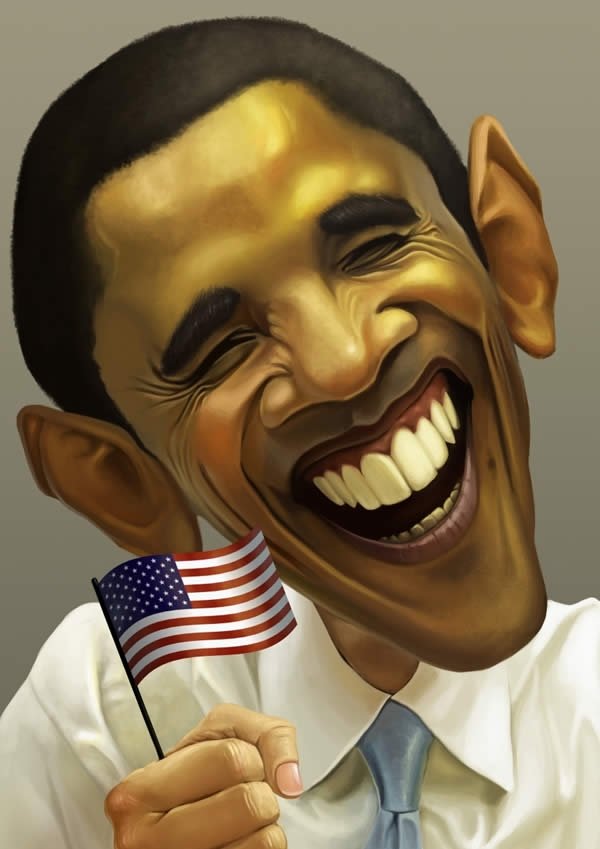|
|
Celebrity Caricature
|
Though Brennan's formalization was introduced in the 1980s, it remains relevant in recent work. Mo et al. refined the idea by noting that the population variance of the feature should be taken into account. For example, the distance between the eyes varies less than other features such as the size of the nose. Thus even a small variation in the eye spacing is unusual and should be exaggerated, whereas a correspondingly small change in the nose size relative to the mean would not be unusual enough to be worthy of exaggeration. Leopold et al. found that individual face-recognizing neurons in the inferotemporal cortex respond more strongly to caricatured faces than to the veridical representations of the same face, and suggest that the visual brain may code faces relative to a prototypical face, consistent with Brennan's formalization.
Some, on the other hand, argue that caricature varies depending on the artist and cannot be captured in a single definition. Their system uses machine learning techniques to automatically learn and mimic the style of a particular caricature artist, given training data in the form of a number of face photographs and the corresponding caricatures by that artist. The results produced by computer graphic systems are arguably not yet of the same quality as those produced by human artists. For example, most systems are restricted to exactly frontal poses, whereas many or even most manually produced caricatures (and face portraits in general) choose an off-center "three-quarters" view. Brennan's caricature drawings were frontal-pose line drawings. More recent systems can produce caricatures in a variety of styles, including direct geometric distortion of photographs.
In a lecture titled The History and Art of Caricature (September 2007, Queen Mary 2 Lecture theatre), the British caricaturist Ted Harrison said that the caricaturist can choose to either mock or wound the subject with an effective caricature. Drawing caricatures can simply be a form of entertainment and amusement - in which case gentle mockery is in order, or the art can be employed to make a serious social or political point. A caricaturist draws on (1) the natural characteristics of the subject (the big ears, long nose or whatever); (2) the acquired characteristics (stoop, scars, facial lines etc.); and (3) the vanities (choice of hair style, spectacles, clothes, expressions and mannerisms).
|
|









